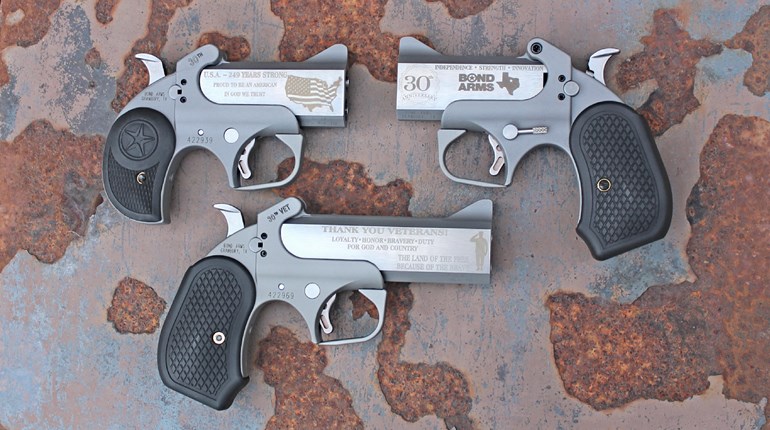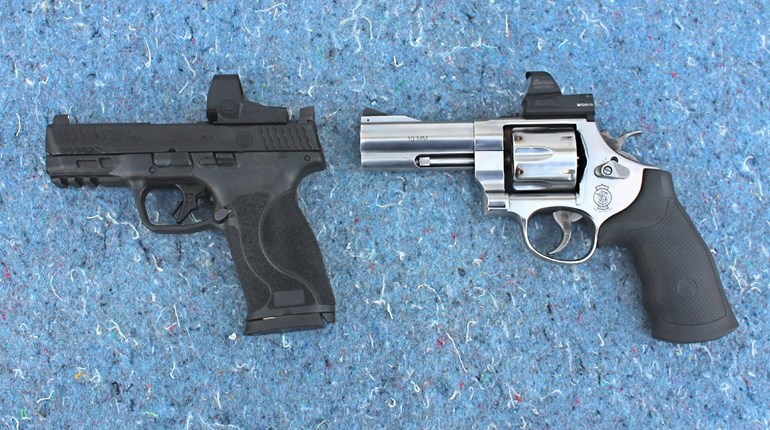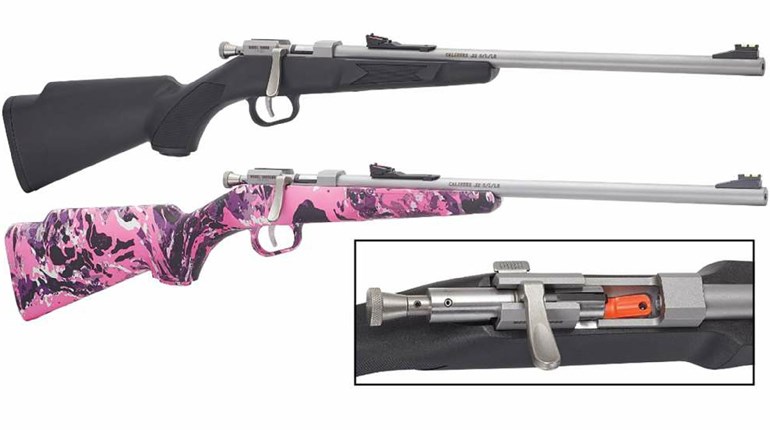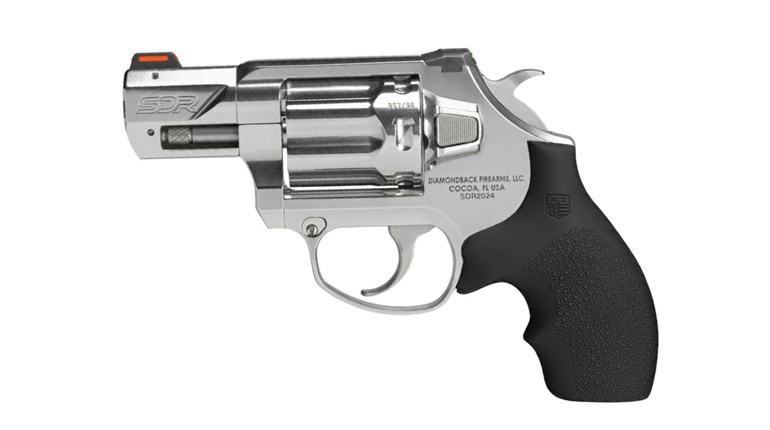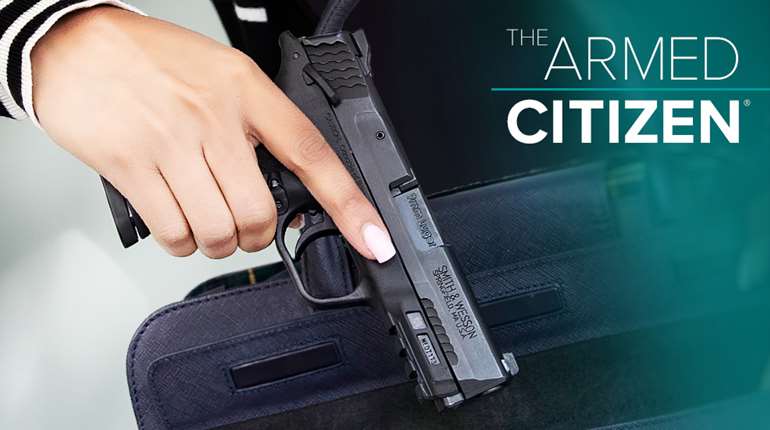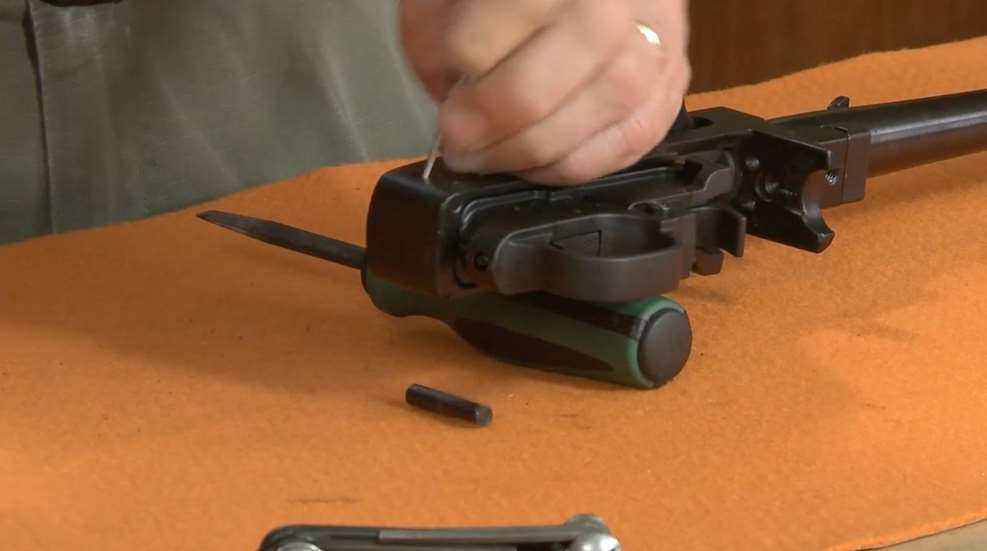
Rifles and carbines chambered for .22 LR can provide some of the most enjoyable range and field time available to shooting sports enthusiasts. Their soft-shooting characteristics, slim stocks and affordably priced ammunition make them a great fit for all ages and experience levels. But even the best and most trusted .22-caliber rifles can start to act up once in awhile. This is not an uncommon occurrence for rimfire fans, nevertheless it can be frustrating and inconvenient.
When a rifle experiences a mechanical breakdown, such as a chipped firing pin, weak or broken springs or a cracked stock, there's little that can be done during a shooting session to resolve it. There are also times when it’s just not clear what's going on with the gun and your instincts are telling you to just stop shooting. In these cases, it's time to unload the rifle, put it back in the case and arrange for an appointment with your friendly neighborhood gunsmith.
But in between the .22-caliber rifle conditions of "Working Properly" and "Well and Truly Busted" there are maintenance activities and ammunition adjustments that can be used to either avoid or resolve common reliability issues. For this conversation I'm going to be speaking primarily to semi-automatic .22 LR rifles. Manually operated rifle actions including bolt, lever- and pump-actions can exhibit some of these problems but semi-automatics experience them all. These tips can also come in handy when troubleshooting .22 LR pistols.

It's the Rifle, Not the Ammunition
Rifle related issues can crop up suddenly or, much like automobiles, they can show signs of trouble before the rifle comes to a complete stop. Here are a few questions and answers that can help to ferret out the problem:
When was the last time the rifle was thoroughly cleaned?
The single most common cause of malfunctions for rimfire rifles is a fouled barrel and action. The .22 LR is a dirty round by most cartridge standards due to the powders used and the waxy lubricant applied to the bullets. The wax leaves a greasy coating in the bore and action that powder residues cling to. When this grubby fouling builds up enough to keep the cartridges from seating properly, or the moving parts from moving, the rifle will start jamming. The only practical solution is to scrub the sludge out.
Just how clean is clean enough? There are no hard-and-fast rules but here's the rule of thumb I use. Guns of any caliber used for personal protection need to be staged immaculately clean and properly lubricated. Keeping hunting rifles clean is a good idea to in order to contribute to a more successful outcome. But for causal plinking and informal target shooting, .22 LR rifles can be shot until they start to malfunction. If it's jamming, it's time to clean it. How many rounds might that be? It depends on the rifle and ammunition used. Some models will begin to jam at around 200 rounds while others will chew their way through a pair of 500-round bricks before needing a bath. Pay attention to your gun's behavior and use your best judgment.
Is the gun properly lubricated?
Cleaned and lubricated are not necessarily the same thing. It's traditional to conclude a good gun scrubbing by applying gun oil to the appropriate parts and locations before putting the gun back together. But lubricants can dry up or run off over time. Perhaps there was not enough oil applied in the first place. As a result, guns that are under lubricated or have dried out in storage will start jamming up right away and it can unnecessarily stress the rifle’s components.
Are the magazines dirty, damaged or incompatible with your gun?
We often take the durability of removable box magazines for granted. But they too are machines, albeit simple ones, that can cause reliability issues if they get dirty, the feeding lips are dented, the springs are wearing out or they get dropped once too often. Like the rifles they feed, the magazines need to be inspected and cleaned as well.
Some .22 LR rifle models, like the Ruger 10/22, are magnets for third-party components, especially magazines that hold more than 10 rounds. But not all aftermarket magazines are created equal. Some may work well while others will not. A safe bet is to take a look at what the gun's manufacturer has to offer in the way of additional magazines. When considering aftermarket magazines, stick with reputable companies and products that have positive reviews. But know up front that some of them just might not fit.
What happened to the accuracy?
Sometimes while shooting, a rimfire rifle will shift from tack-driving accuracy to swerving bullets around the broad sides of barns. Most rifle sight systems, including iron sights, magnified scopes and micro red dot optics, rely on screws, bolts and nuts to secure them in place. And when they shake loose or fall out the rifle's sight alignment goes right along with them. It's a good idea to keep a small screwdriver or hex wrench in your range bag sized for the rifles sight system and check the screws' tightness from time to time.
How to Avoid Rifle-Based Issues: Pre-Range Bench Checks
All of the issues listed above can be avoided with a simple set of bench checks before heading out into the field. Without any ammunition in or near the gun, cycle all of the controls and the rifle's action. Look over the exterior for damage, cracked furniture or loose components. Inspect the bore for obstructions and the magazines for dirt or damage. The five minutes spent running these bench checks may save you a day of frustration in the field.

It's the Ammunition, Not the Rifle
One of the best ways to keep a mechanically sound and properly cleaned rimfire rifle running reliably in the field is to test it with various brands and bullet weights of .22 LR ammunition at a shooting range. When you find the loads that run reliably and with a level of accuracy that meets your needs, stick with those same loads going forward. This will solve many, if not all, of the problems listed below.
Despite the benefits of tested ammunition, it's common practice for enthusiasts (including me) to switch up their ammunition options, even in the middle of a shooting event. Sometimes a preferred brand is not in stock, there's another option that costs less or you just want to try something new. We may just run out of ammunition and need to borrow some from a buddy. So go ahead and shoot what you can get but don't be too surprised if an untested load does not operate as expected. Here are some questions and answers to keep in mind when troubleshooting .22 LR ammunition:
Why did the gun go click instead of bang?
Perhaps the most common cause of a failure to fire with .22 LR cartridges is a faulty primer. The cartridge rim may be dented by the firing pin (you can see it) but a gap or flaw in the priming compound inside the rim at that location prevented the ignition of the powder charge inside the cartridge. Faulty primers do occur with premium ammunition but they are more commonly found in bulk-boxes of practice-grade ammunition. If you make it through a 500-round container with a half dozen or so duds, you’re doing just fine.
Is the .22 LR cartridge producing enough pressure to run my gun?
The ammunition available for .22 LR rifle is surprisingly diverse. We covered the variations in bullet weights, styles and velocities in this article if you would like to learn more.
But here is the short answer for the reliable operation of semi-automatic rifles. Some loads may not generate enough pressure to push the bolt of your rifle all the way back when fired. When the bolt does not cycle completely then jams occur. Lighter bullet weights and lower bullet velocities are more likely to be under powered for semi-automatic rifles. Take a look at the ammunition you know works well for your gun and look for other loads with the same bullet weights and velocities. When in doubt, High Velocity loads with 40-gr. bullets will usually do the trick.
Have I shot this brand or bullet style before?
Some guns exhibit what can best be described as “brand sensitivity.” It's not as common as some problems, but it happens. I remember a rimfire rifle test using various loads made by Federal, Remington and Winchester. Things moved along smoothly until I got to the Winchester loads, which made the gun stutter. I tried a total of three different Winchester loads with no luck. A few years later, I ran into the same problem while testing a different rifle but this time around the Remington fodder was the problem. Was it the bullet shape, minute differences in the cartridge dimensions or perhaps the powder? I can't say for certain in either case. But the moral of the story is this: All rimfire rifles will run well with many loads but no rifle is reliable with all loads.
What happened to the accuracy this time?
Much like the brand sensitivity question, some loads are going to print tighter groups down range than others. Sometimes the differences between loads can be significant. This isn’t necessarily a question of ammunition quality either. Sometimes a less-expensive round may shoot just as well or better than a premium load. Only time and testing will tell for sure.
How to Avoid Ammunition-Based Issues:Trial and Error
There is an old joke where a patient tells a doctor that it hurts to move an elbow joint, “just like this.” The doctor's reply? Don't do that! It's not exactly sound medical advice but it's applicable to shooting sports. Most modern .22 LR rifles will tick away reliably with most of the ammunition you'll find in stock at big box and sporting goods stores. But discovering the best fit for your gun may require a few trips to the range with a mix of ammunition options. Not to worry though; it’s time spent shooting a .22, which in my book is a good time indeed!












